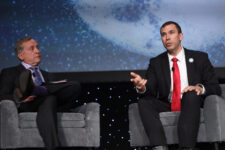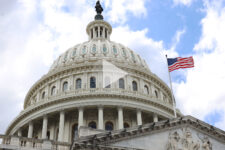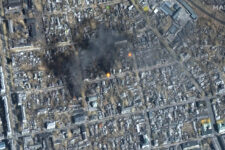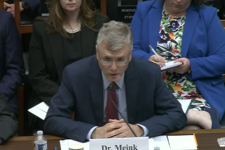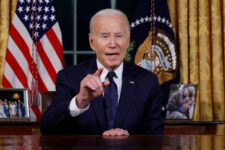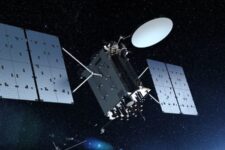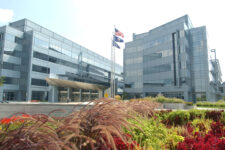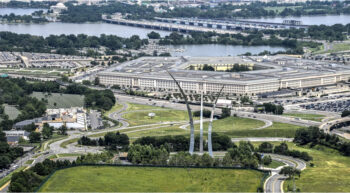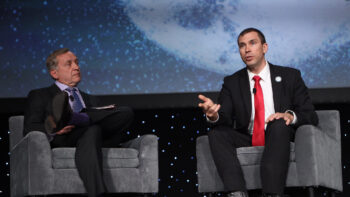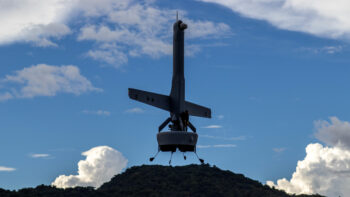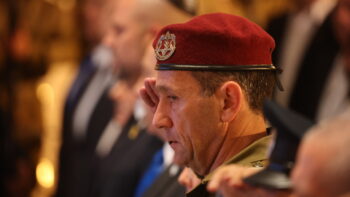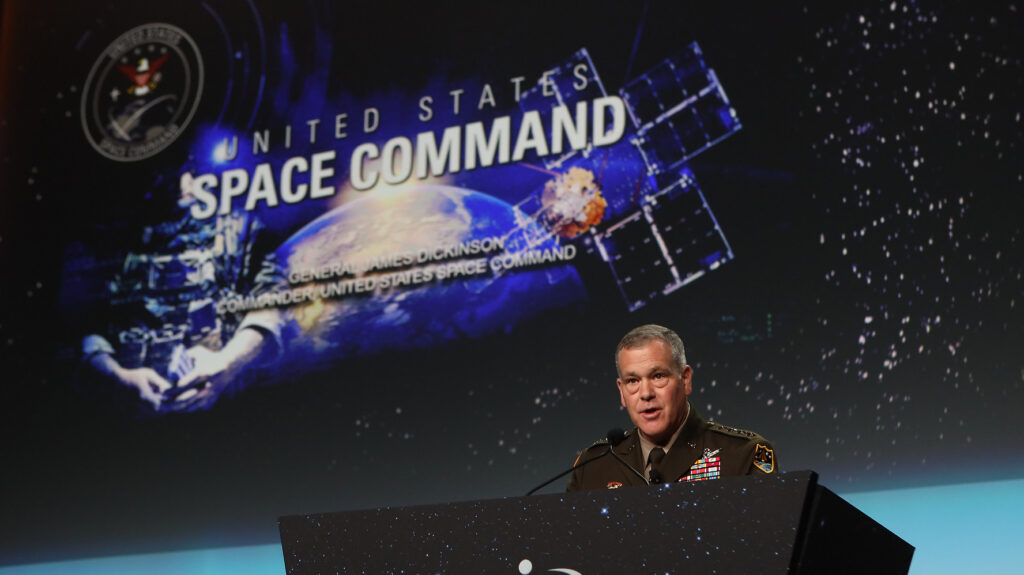
Gen. James Dickinson, commander, US SPACECOM, speaks at the 2022 Space Symposium. (Credit: Space Foundation)
WASHINGTON — As part of the high-priority effort to improve space domain awareness — especially over the Southern Hemisphere where the US has few eyes on the heavens — Space Command recently signed a data sharing agreement with an Australian commercial launch firm, said SPACECOM Commander Gen. Jim Dickinson.
“We are increasing our space situational awareness, [and the] number of countries that work with us each and every day,” Dickinson told Breaking Defense and Defense One on Tuesday. “Those countries have capabilities that we can leverage, and when I look at space domain awareness … it’s all about location, location, location.”
Southern Launch, based in Adelaide, is the first Australian commercial launch provider to sign an SSA sharing agreement with SPACECOM, according to a Sept. 29 company press release. The firm now will share information in advance of its planned launches with the 18th Space Defense Squadron. “Looking ahead, the two will work together on de-orbit, re-entry and end-of-life de-orbit support to assist in reducing the amount of space debris orbiting Earth,” the release added.
SPACECOM and the Space Force are increasingly interested in working on SSA issues with Australia, given the importance of keeping tabs of spacecraft launched from China. In another example of that interest, the Australian Department of Defence and the US Space Force on Sept. 30 declared initial operational capability for the Space Surveillance Telescope (SST) at Naval Communication Station Harold E. Holt in Western Australia.
The SST “provides ground-based, broad-area search, detection and tracking of faint objects in deep space to help predict and avoid potential collisions, as well as detect and monitor asteroids,” according to a Space Operations Command press release.
The continued expansion of space data sharing agreements between SPACECOM and commercial firms, both in the US and abroad, as well as US allies and partners, is part of SPACECOM’s goal of “persistent coverage … persistent awareness, as much as possible” of on-orbit activities, Dickinson said.
One of the biggest continuing challenges to improving space domain awareness, he explained, is building a command and control (C2) system that can rapidly makes sense of the mounds of raw observational data and disseminate targeted information to operators.
“It all comes down to: how do you ingest all that data?” Dickinson said. “You get massive amounts of data, everybody does, but how do you properly use that — through a C2 system, through application of AI and machine learning” — so that when “young operators” are faced with “incredibly complex missions … they’re not looking at everything, they’re looking at the right thing?”
Dickinson reiterated that the “whole idea” of space domain awareness is to move from simply “reporting” the whereabouts of satellites and dangerous space debris to characterizing space objects and assessing their risks.
And once the Commerce Department stands up its space traffic management service for civil, commercial and non-US operators, Dickinson said, it “will allow me to use my assets … a little bit differently to be able to do more of a characterization” of the space environment.
“That’ll be important, especially as we watch the growth of … the space commercial market, we watch the growth of some of our competitors, in the space domain,” he stressed.
Marking the 23rd annual celebration of World Space Week (Oct. 4-10), Dickinson noted the importance of space “governance,” including the development of “norms of responsible behavior,” and the “need to better preserve” the space environment.
Dickinson said that when SPACECOM stood up three years ago — “so we’re all three-year-olds now in the command,” he chuckled as an aside — it was tracking about 25,000 objects, “everything from active to defunct satellite to paint chips.” That number now is “over 47,000,” he said.
“It continues to increase and not necessarily in a good way,” he added. “These are things we have to watch very closely.”
In particular, Dickinson praised the Federal Communications Commission’s Sept. 29 decision to require that satellite operators subject to its own regulations must de-orbit spacecraft stationed in LEO within five years after they cease to operate — rather the 25-year deadline required by current federal guidelines.
The FCC regulates the use of radio frequency spectrum, and thus most commercial satellite operators (and all commercial satellite communications operators) must get its approval before launch.
“I think that’s a remarkable achievement in itself. I mean, that is absolutely demonstrating … the governance that’s required like we do in any other domain. We have governance structures for air travel, maritime travel, and so on,” he said. “So certainly that would logically flow into the space domain as well.”
